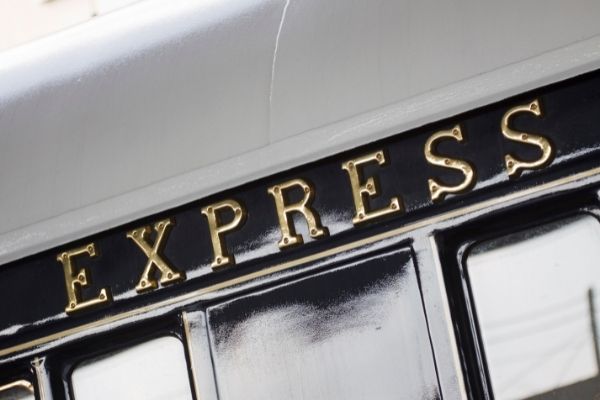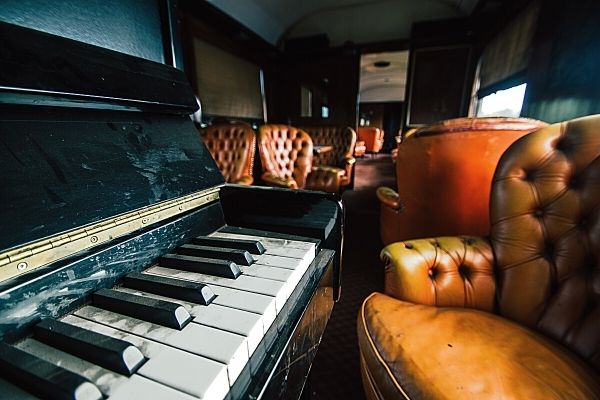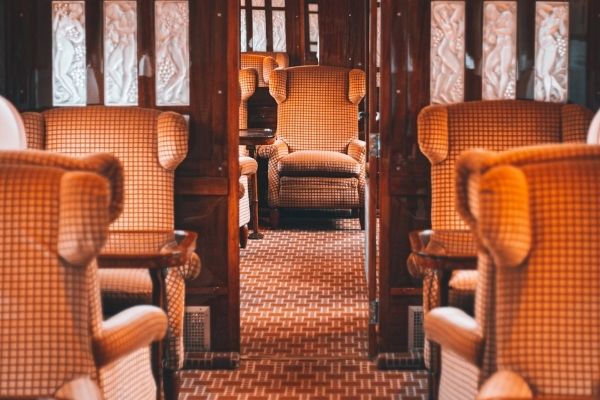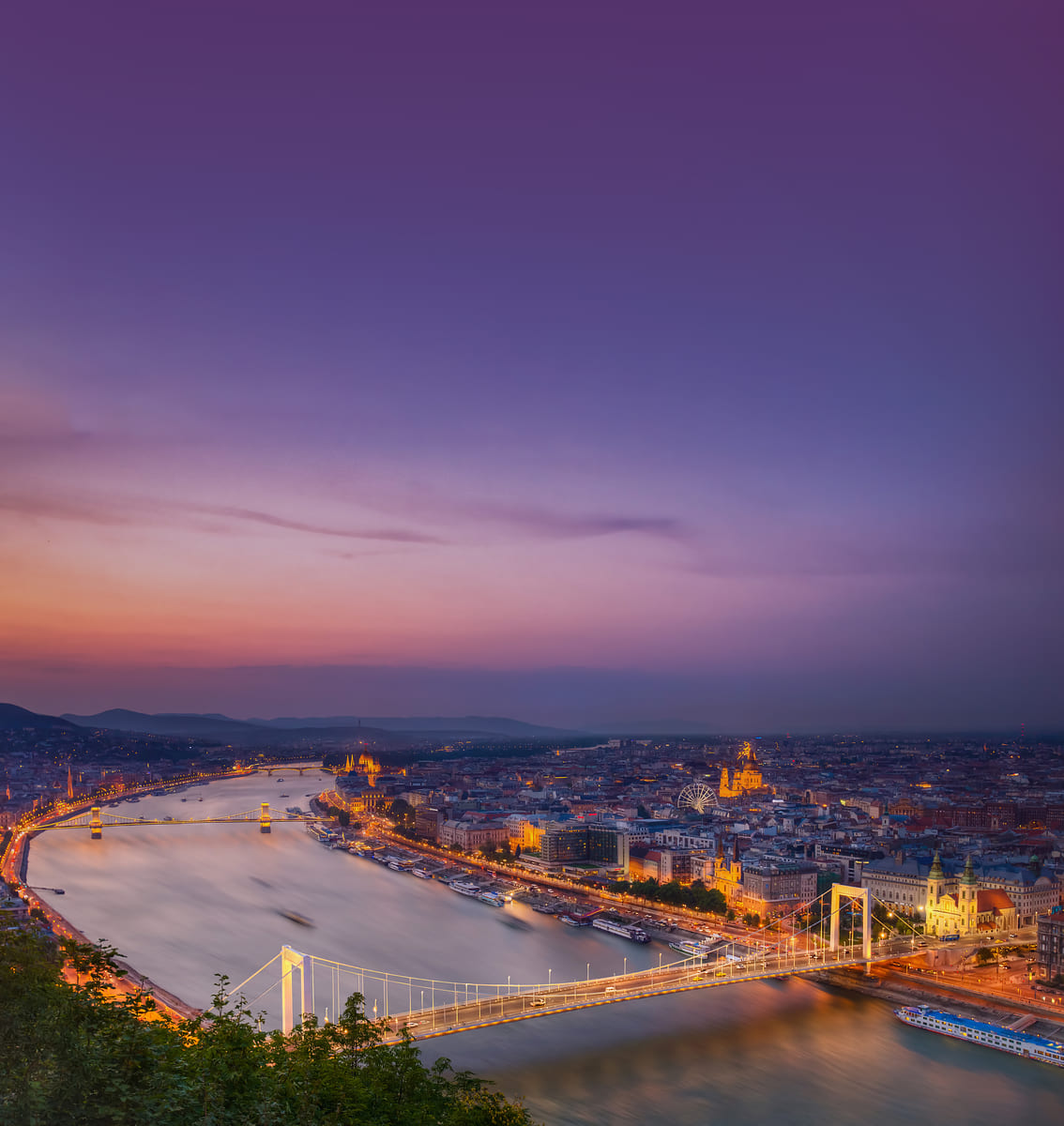What to expect from a journey on the Orient Express

For almost 140 years, the Orient Express has been one of the most prestigious names in travel. The train route east from London has been a favourite of royals, diplomats, authors, and filmmakers since it first made tracks. It's also always been the height of luxury.
Contrary to popular belief, there is no "original" Orient Express train, as it was a route taken by many companies. In 1883 the first Express D'Orient travelled from Paris to Vienna. By 1885, the route was travelling well past Austria to Istanbul. Two world wars shut down the train service, but its height of popularity was between them, in the early 1930s. The cars on today's Orient Express come from this era, when beauty and comfort came above all else.
Even more comfortable and sophisticated than it was during the golden age of rail travel, a journey aboard the Orient Express has to be on every traveller's bucket list.

Gold Platted letters on Orient Express. Credit: Getty Images
The Journey
The modern Venice Simplon-Orient-Express (VSOE) travels south-east from London to Venice. The journey is only 24 hours, but time is meaningless when you're winding through the grandeur of Paris, the mountains of Austria, and past the sun-dappled waters of Northern Italy.
The journey can start from either end, but heading south comes highly recommended. The trip starts onboard the historic, mid-century British Pullman train from London to Folkestone. At Folkestone, passengers transfer into a road coach for a quick jaunt across the channel and arrive to the smiles of the VSOE attendants in Calais. Knowledgeable, well-dressed, and friendly, the white-gloved staff is there to ensure passengers have the most luxurious train experience possible.

Close-Up Of Piano Keys In Orient Express. Credit: Getty Images
The journey doesn’t have to go all the way from London to Venice; passengers can opt to get on or off at Paris and Verona, too. While on board, for no matter how long, most people choose to dress up. After all, when on a 1920s train, you must do as the flappers did: dress well, enjoy a cocktail, and hob-nob.
The Accommodation
Staying in a room dating from the 1920s or '30s is no punishment; it was one of the most decadent periods in human history, after all. Passengers can enjoy tapestry seating, lamp-lit interiors, a bar, and even a pianist. Every sense is catered to, transporting those on board back to the Roaring Twenties, a golden age of post-war leisure.
On the Orient Express, each private compartment includes a tall couch, a folding table, and little luxuries like mineral water, a soft dressing gown, and slippers. The window can be wound all the way down, so there's nothing between a camera and the views of Lake Zürich or the picturesque Arlberg Pass.
At night, the comprehensive turn-down service transforms the train compartments into bedrooms as comfortable as any hotel, with plush blankets and pillows so soft passengers will forget they're moving.
Despite the train's age, power sockets are available in VSOE sleeping compartments so that even in the midst of mid-century luxury its travellers have all the mod-cons available.
One thing to keep in mind is that there are no showers. These cars are authentic pieces of history, and so passengers are provided with the utmost in 1930s luxury: a large washstand with both hot and cold running water.

Luxury seats on the Orient Express. Credit Florian Marette
The Food
If taking the journey south from London, the day starts with a three-course brunch paired, of course, with sparkling Bellinis. Lobster, salmon, scrambled eggs, caviar, and the freshest European breads and cheeses are all considered standard fare aboard both the British Pullman and the VSOE.
Once in Calais, the VSOE attendants set about organising dinner reservations. For those stopping in Paris, an early sitting is a must. For those travelling through to Verona or Venice there's all the time in the world, and plenty to do in between meals.
There are three dining cars to choose from, but for those with no preference the attendants will make a choice. Passengers can choose to dine in the Côte d'Azur, L'Étoile du Nord, or L'Orientale. Each has its own distinct style, but the food is universally gourmet. The sumptuous window dressings, opulent furniture, and fine European cuisine make dining on board a truly memorable experience.
An insider's tip: it's a good idea to book a different dining car for each meal, so the train's full offerings can be experienced.

Traveler disembarking from the Orient Express. Credit: Florian Marette
Of course, it's not all about the three main meals: the piano bar is always open for a dance, a cocktail and good conversation.
Special dietary requirements can also be met if requested on booking.
The Destination
The final destination on the VSOE is Venice. This iconic Italian city is renowned for its beauty, from the gold-trimmed gondolas that roam its glimmering canals through to the traditional glasswork of Murano and the opulence of the Doge's Palace.

Couple walk along waterfront towards gondolas. Credit: Getty Images
It's a romantic destination, but it's also got plenty for solo travellers. Forget about St Mark's Square - although it is beautiful - and take a walk through the side streets, past cathedrals and palaces that reflect the city's trade history: Gothic buildings have Renaissance facades and little Byzantine flourishes thanks to centuries of maintenance.
At street level, the cobbled pathways next to slim canals are almost always lined with trattoria fronted with enthusiastic staff. Venice is largely tourist-driven so most menus are in multiple languages, but one phrase remains the same in all of them: "Aperol spritz". This bright orange, bitter, delightfully fresh drink is available year-round. It may not compare to the Orient Express' custom-designed cocktail menu, but at only a few Euros, there's no better way to stop and reminisce on the journey.

one of a kind holiday?
Takes 3 minutes
